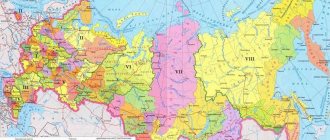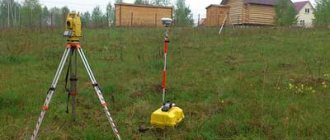Definition and regulatory framework
The cadastral procedure for merging borders, according to Article 11.6 of the Land Code of the Russian Federation, is the formation of an integral territory from two or more neighboring territories. To carry it out and register, you need to provide a list of documents with the application. When the new sample boundary plan meets all the requirements, work on the formation of a private plot with a new territory will stop.
Before you begin the procedure for merging land plots, you need to figure out whether this can be done in this situation. Eg:
- you can combine 2 plots on which it is allowed to engage in gardening, construction of buildings, etc.;
- allotments must be located within one territorial entity;
- you will have to take into account the maximum permissible area sizes for one land plot, which are established in a particular region;
- It is impossible to connect territories that belong to different categories (a forest belt and an area occupied by a reservoir);
- plots must be registered in the State Cadastral Register;
- If other rights, not property, are registered on the plots, then the owner will allow the person who uses them to combine them for use, and not third parties.
Where to go to merge two land plots with different cadastral numbers
Cadastral registration and registration of rights in relation to a newly formed plot are possible in various ways.
It could be:
- appeal to Rosreestr;
- submission of necessary papers to the MFC;
- visiting the land resources committee;
- filing an application electronically using the government services portal.
Any of the above options involves submitting a standard set of papers, the list of which is fixed by the provisions of Federal Law No. 218-FZ.
The order of combining two into one: procedure and stages
IMPORTANT! You need to request a cadastral plan of the site from the Unified State Register of Real Estate (USRN). This information is required to study the condition of the adjacent boundaries of the area. If errors are identified among the results of the last survey, you need to submit an application to correct them.
To combine any number of adjacent plots into one, the owner submits the specified documentation. List of documents for merging plots:
- This is a document proving the identity of the submitter (you can take a photocopy).
- photocopies of certificates for adjacent plots;
- cadastral certificate for the plot;
- notarized permission to form a single plot.
To issue a ruling, additional information may be required, but most often a standard package of documents is sufficient.
Sample application
To obtain permission, the owner must fill out a sample application for the consolidation of land plots. This document must contain information about the boundaries of the original territories, a list of attached papers, as well as the reason for the unification.
The document can be drawn up either on a standardized form or in free form, but it is strongly recommended that the document be drawn up in printed format.
With different permitted uses
When connecting land plots, the type of permission to use plays an important role. If it is very different, the formation procedure will not be possible. Agricultural and individual housing construction types are compatible, but industrial and forest plantations are not compatible.
In what cases is it not allowed to combine adjacent land plots:
- these territories belong to one individual or legal entity by right of hereditary ownership;
- one of the sites belongs to the owner by the right of lifelong inheritable heritage, and the second - by the right of perpetual use;
- All plots belong to the owner on a perpetual use basis.
IMPORTANT! To obtain the right to connect areas with different types of permitted use, you need to change the category of one or more of them, with the permission of the owner.
A package of documents is provided for this:
- tenant's passport;
- connection request;
- lease contract;
- cadastral certificate;
- documents for construction.
For individual housing construction, the list is supplemented by plans for the territory and building, as well as a written agreement from the owners and neighbors. After receiving permission, you need to submit documents to Rosreestr to edit data in the Unified State Register and property documents.
When the type of permitted use is changed, the owner submits the usual package of documents to form a common territory.
Areas with encumbrances
Encumbrances on a land plot are restrictions that do not allow a full range of actions to be carried out with it.
Types of encumbrances:
- easement;
- mortgage;
- long-term;
- concession;
- arrest based on a court decision;
- trust management.
Before merging sites, problems with encumbrances must be resolved, otherwise in some cases it will be impossible to combine two sites, and in some cases restrictions will apply to them.
Leased plot
If the land sites are leased, then only the lessor must deal with the connection, and the rules for combining remain the same; at the discretion of the parties, at the end of the lease agreement, the sites can be divided again.
How to combine land plots with different cadastral numbers
The connection of two landholdings that have different cadastral numbers occurs in the following sequence:
- preparation process. Make sure that the collected land ownership documents are properly completed. Also carefully check the information recorded in the state real estate cadastre with the land plan data. Taking into account the information thus established, check the correct location of land boundaries. If you find discrepancies, surveying work will be required;
- appearance before the authorized bodies to sign an agreement on the consolidation of land by the participants in the procedure. Submit a statement about the need for the event;
- after the agreement is signed, the cadastral engineer begins preparing the survey file, which must be certified by the applicant and submitted to the competent authorities for verification;
- The end of the event is accompanied by the receipt of a cadastral passport. It is usually produced within five days. With the prepared documents, visit the Rosreestr authority or a multifunctional center in order to register ownership of the land obtained as a result of the merger.
The newly created plot is assigned an address. In order to reduce time costs, start obtaining the address of the land when the cadastral work is completed, and the site itself has not yet undergone the cadastral registration procedure. This way, you will not need to provide separate documentation for address assignment.
How to combine two sections into one?
Read about the merger of two land plots belonging to the same owner here.
How to get help from a lawyer on land issues, read the link:
Determining the boundaries of the future site: who to contact?
To determine the boundaries of the site, you need to carry out land surveying or cadastral survey.
Both processes are fast and not very expensive. After completing these operations, you are provided with documents that contain official evidence of the size, geometry and topography of the site.
Direct communication on the topic will be carried out with a cadastral engineer - this is a specialist who will explain to you all the intricacies of the procedure and announce the price.
Cost and terms
Depending on weather conditions, season, queue for work, region, the price can range from 5,000 to 15,000 rubles. Even in the worst case scenario, the procedure will not take more than two weeks.
Decision on consolidation of land plots
The best option in this case can be considered to obtain a decision regarding the merger of landholdings, which will allow you to become the owner of a single plot, instead of owning several. If you own two plots, then one, the area of which is equal to one, their market value will be less than in the case of a single object. In this case, you will not need to collect a package of documentation twice for each plot and pay land tax for each of them.
A decision made by local authorities regarding the consolidation of landholdings requires state registration of rights to the newly formed land plot.
Together with the procedure for registering rights to the created plot, registration of restrictions or encumbrances also occurs, even if they are established in relation to only one of the plots to be merged.
If the registration of the right to one of the connected plots was not carried out, this cannot be a reason for refusing registration actions in relation to the land ownership being formed, if there is a document authorizing the merger of territories.
It is also possible that certain situations, provided for by the legislator, may arise in which, together with the procedure for registering land ownership rights after the connection, restrictions and encumbrances are removed, but in this case it is always necessary to consider the specific situation by a qualified specialist dealing with land issues.
Resolution on the consolidation of land plots
In the resolution issued after the approval of the specified measure in relation to the connection of land holdings, the main point is the procedure for assigning an address to the newly formed plot by local authorities. This occurs after the submitted application for land consolidation and the documentation attached to it are considered within the period established by the legislator from the date of receipt of the relevant papers.
The first step in the local administration is the preparation of a draft resolution regarding the consolidation of plots, with further consideration of this topic at a meeting of the commission formed to regulate land legal relations by local authorities.
The specified draft document on the consolidation of land, developed by the relevant administration, implies a mandatory procedure for coordination with the chief architect of the municipality with the submission of a document authorizing the consolidation of plots and a prepared land survey plan for connecting the territories.
After the commission regulating land legal relations makes a decision on the possibility of combining real estate, the issue is considered at a meeting of the administration, as a result of which a resolution is issued regarding the combination of plots, signed by the head of this administration.
If the decision is not made in your favor, you will be notified in writing, indicating the grounds for refusal to complete the procedure.
Either way, you will receive written notice within seven days of the date the decision to refuse was made. The resolution on the unification of land holdings is issued by an appropriate person authorized by the administration at a personal reception.
If you do not agree with the decision made, you can appeal the actions of the authorized person in accordance with the requirements of the current legislation, including by filing an application with a judicial authority.









